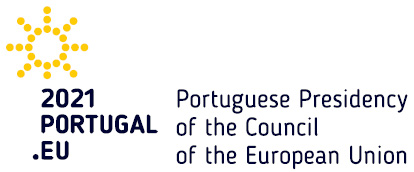The priorities of the action programme for Serbia are in line with the Indicative Strategy Paper for Serbia (the strategy paper)1 which sets out the priorities for EU financial assistance for the period 2014-2020 to support Serbia on its path to EU accession based on two pillars: Democracy and Rule of Law, and Competitiveness and Growth. The selection of the specific sectors to be financed under this programme was based on the consideration of the objectives and results included in the strategy paper; the priorities defined within the Enlargement Strategy and Main Challenges 2014-2015; the specific recommendations of the Commission Progress Report for Serbia for 2014, as well as on relevant national strategic documents, mainly the National Programme for Approximation with the Acquis (NPAA) and the Document on National Priorities for International Assistance – Needs Assessment Document, (NAD).
The present programme has been prepared in close cooperation with the Serbian European Integration Office and national institutions, as well as in close coordination with other donors including international financial institutions, and civil society organisations. In view to move further towards a sector approach, the actions under this programme have been selected based on their relevance and their contribution to national sector strategies as well their link to accession negotiations. In addition, actions have been assessed based on key principles of maturity, absorption capacity, adequate sequencing with previously programmed IPA and other donor’s assistance.
IPA, or the Instrument for Pre-Accession Assistance, is the streamlined mechanism created by the EU to deliver aid efficiently to the Western Balkans and Turkey. This instrument has been designed to streamline the support to reforms in these countries through a single but flexible system, which will bring direct benefit to the citizens, while the countries receive additional assistance in achieving European standards.
The financial value of the IPA projects in the region for the period 2007-2013 totals EUR 11.5 billion. IPA replaces the five previous EU instruments for pre-accession – Phare, ISPA, SAPARD, the Turkey programme, and CARDS.
IPA is focused on needs. So its priorities are based on clear assessments. Key elements are the Accession/European Partnerships that the EU has established with each of the beneficiary countries, the Commission’s enlargement strategy paper, and the annual reports on each of the countries.
The allocation criteria take account of each country’s capacity to use and to manage the funds, and their respect of the conditions for accession. A suspension clause can be applied if conditions are not met. In this way, IPA provides the link between the political framework for enlargement and the EU budgetary process.
IPA provides assistance in different forms to countries undertaking political and economic reforms on their path to EU membership: investment, procurement contracts or subsidies; Member State experts to build administrative cooperation; action to support the beneficiary countries; aid in implementing and managing programmes; in exceptional cases, budget support.
Also, IPA offers the EU with a coherent framework for management and for gradual decentralisation or delegation of management to the beneficiary countries. It also permits flexibility in the application of assistance. IPA provides a powerful link between the budgetary and policy aspects of enlargement. It makes clear to the beneficiary countries what they may expect in terms of assistance, provided they meet the conditions attached.
In this way, IPA reinforces the guidance that the EU provides to the candidate and potential candidate countries on the priorities they should be pursuing. But above all, IPA helps ensure that these countries which are not only its neighbours, but are also potential future members of the EU, develop the standards and values that the EU is built on. In this way, IPA is a real investment in the future – for the beneficiary countries, and for the EU itself. It brings a new focus to EU enlargement assistance.
Generally, IPA funds can be used in four ways:
- As Technical Support, which usually involves the engagement of experts – consultants who provide services to Serbian institutions, e.g. Serbian Department for Customer Protection, prepare project documentation, develop strategies, conduct training, etc.
- Through Twinning projects, pairing up local institutions with similar administrations in one of the EU Member States to implement projects, share knowledge and experience and provide assistance in implementing the EUacquis…
- Through investment projects, mostly involving procurement of equipment, works and implementation of financial arrangements with other financial institutions.
- Through grants allocated in order to fund special projects involving civil society, local self-government, agencies, etc.
Related documents:
- COUNCIL REGULATION (EC) No 1085/2006 of 17 July 2006 establishing an Instrument for Pre-Accession Assistance (IPA) (PDF, 254KB)
- Frequently asked questions on Instrument for Pre-Accession Assistance – IPA (MEMO/06/410), Brussels, 8 Nov 2006 (PDF, 79.08 KB)
- COMMISSION REGULATION (EC) No 718/2007 of 12 June 2007 implementing Council Regulation (EC) No 1085/2006 establishing an instrument for pre-accession assistance (IPA) (PDF, 349KB)
- Multi-annual Indicative Planning Document (MIPD) 2007-2009 for Serbia (PDF, 206.77 KB)
- Multi-annual Indicative Planning Document (MIPD) for Serbia 2008-2010 (PDF, 155 KB)
- Multi-annual Indicative Planning Document (MIPD) for Serbia 2009-2011 (DOC, 303 KB)
IPA Programmes per component

Multi-annual Cross-border co-operation programme with neighbouring Candidate or Potential Candidate Countries 2007-2013



